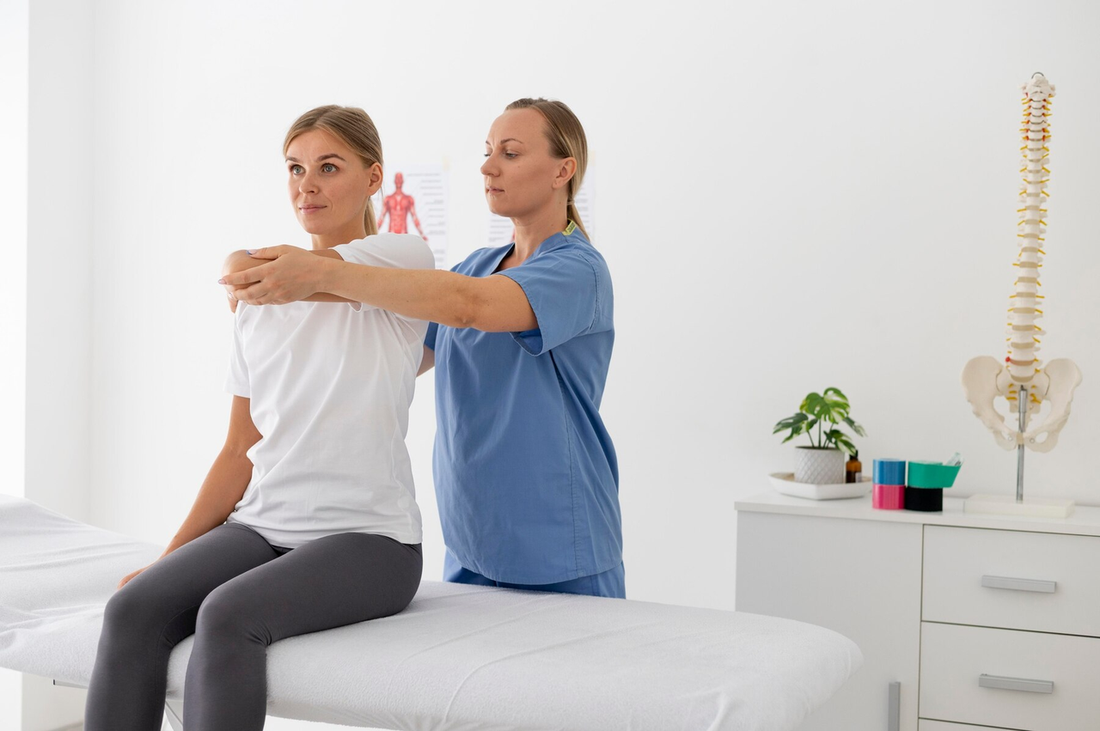Cervical spondylosis, a common degenerative condition of the cervical spine, often results in neck pain, stiffness, and reduced mobility. Physical therapy plays a crucial role in managing this condition, offering tailored treatments that alleviate pain and improve function. This article delves into physical therapy’s approach to combating cervical spondylosis, highlights real-life cases, and provides practical advice for those affected by this condition.
-
Understanding Cervical Spondylosis:
Cervical spondylosis, also known as neck arthritis or cervical osteoarthritis, involves the degeneration of the intervertebral discs and joints in the cervical spine. This condition can lead to bone spurs, disc herniation, and reduced space for the spinal cord and nerves, causing pain, stiffness, and neurological symptoms.
-
The Role of Physical Therapy:
Physical therapy is a cornerstone in the management of cervical spondylosis. Therapists use a combination of exercises, manual therapy, and modalities to relieve pain, improve mobility, and strengthen neck muscles. The goal is to reduce symptoms, enhance function, and prevent further degeneration.
-
Real-Life Cases:
Case 1: Managing Chronic Pain
John, a 55-year-old office worker, experienced chronic neck pain and stiffness due to cervical spondylosis. His physical therapist developed a personalized exercise program focusing on stretching and strengthening exercises. After several weeks, John reported significant pain reduction and improved neck mobility, allowing him to perform daily tasks with ease.
Case 2: Post-Surgical Rehabilitation
Lisa, a 60-year-old woman, underwent surgery for severe cervical spondylosis that caused nerve compression. Post-surgery, her physical therapist guided her through a rehabilitation program. This included gentle range-of-motion exercises, posture correction, and gradual strengthening exercises. Lisa’s consistent therapy sessions helped her regain strength and reduce pain, enhancing her quality of life.
-
Effective Physical Therapy Strategies:
Stretching and Strengthening Exercises:
Physical therapists design exercise programs that include stretching to improve flexibility and reduce stiffness, and strengthening exercises to support the cervical spine. Common exercises include neck stretches, chin tucks, and isometric neck exercises.
Posture Correction:
Poor posture can exacerbate cervical spondylosis symptoms. Therapists educate patients on maintaining proper posture during daily activities, using ergonomic furniture, and making adjustments to their workstations.
Manual Therapy:
Manual therapy techniques, such as mobilization and manipulation, help improve joint mobility and reduce muscle tension. Soft tissue massage can also alleviate muscle spasms and enhance blood flow to the affected areas.
Pain Relief Modalities:
Modalities such as heat therapy, cold therapy, ultrasound, and electrical stimulation (TENS) can provide symptomatic relief. These treatments reduce pain and inflammation, making it easier for patients to engage in therapeutic exercises.
-
Practical Advice for Managing Cervical Spondylosis at Home:
Maintain an Active Lifestyle:
Regular physical activity helps maintain neck strength and flexibility. Incorporate low-impact exercises such as walking, swimming, and yoga into your routine.
Ergonomic Adjustments:
Make ergonomic adjustments to your workstation to reduce strain on your neck. Use a chair with good lumbar support, position your computer monitor at eye level, and take frequent breaks to stretch.
Proper Sleep Position:
Sleep on a supportive mattress and use a pillow that maintains the natural curve of your neck. Avoid sleeping on your stomach, as it can strain the cervical spine.
Heat and Cold Therapy:
Use heat packs to relax tight muscles and improve blood flow, and cold packs to reduce inflammation and numb pain. Apply for 15-20 minutes as needed.
Stay Hydrated:
Hydration is important for maintaining the health of your intervertebral discs. Drink plenty of water throughout the day.
Physical therapy offers a comprehensive approach to managing cervical spondylosis, combining exercises, manual therapy, posture correction, and pain relief modalities. Real-life cases demonstrate the effectiveness of these strategies in reducing pain and improving function. By incorporating practical advice and following a personalized physical therapy plan, individuals with cervical spondylosis can significantly enhance their quality of life. If you are struggling with neck pain due to cervical spondylosis, consult a physical therapist to develop a tailored treatment plan that meets your needs.




